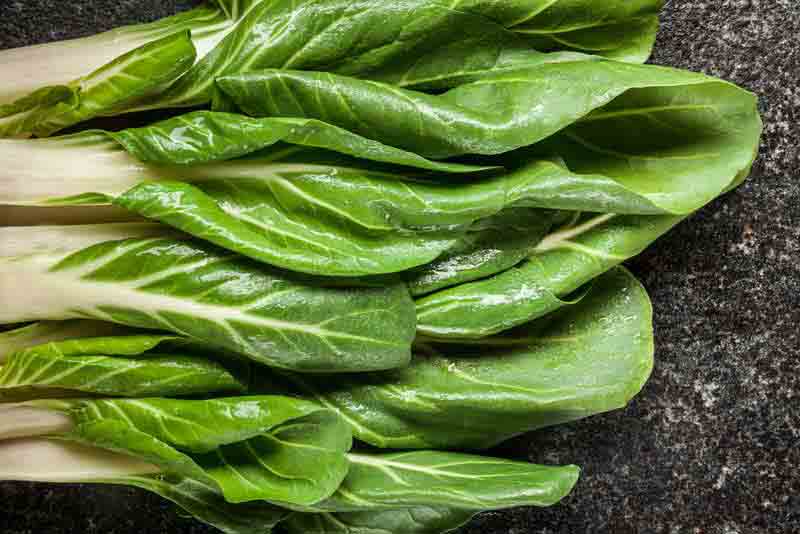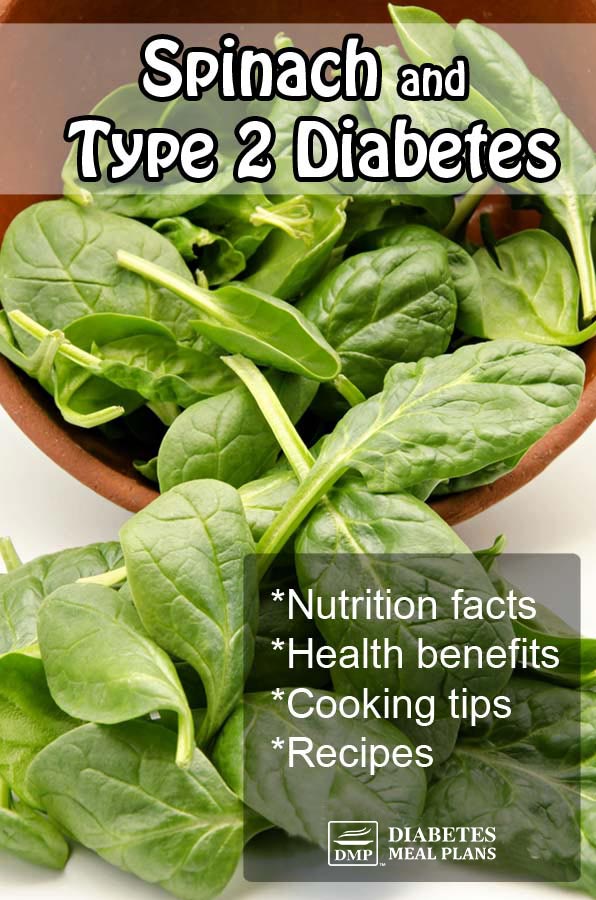Table of Contents[Hide][Show]
Spinach is one of those non-controversial foods when it comes to health benefits—we all know it’s a healthy food–the question is HOW healthy is it? What is true and what is hype? And how beneficial is it to someone with type 2 diabetes?
That’s what we’re here to find out.

If you grew up with Popeye, you knew that spinach was the best way to get you ripped and muscled-up arms. Or if you were a fan of the Teenage Mutant Ninja Turtles, you’d know Michelangelo popularized putting spinach on pizza.
Yes, spinach has been deemed a superfood by all accounts, so let’s take a look at what makes spinach so incredibly awesome.
Spinach Nutrition Facts
- Spinach is very low in calories, only 23 per 100 grams (3.5 oz) serving
- Spinach is high in fiber and low in sugar (<1%)
- Spinach is an excellent source of vitamin A (105% DV), C (24% DV), K (987% DV), folic acid (66% DV), iron (36% DV) and calcium (24% DV) – in fact, spinach is in the top 10 of the most nutrient-dense vegetables available – it packs a power punch in terms of nutrients!
- Spinach contains a multitude of antioxidants and phytochemicals that strengthen immunity, lower inflammation and fight cancer
- Spinach contains carotenoids (carotene, lutein, and zeaxanthin)
Health Benefits of Spinach
- Fiber helps bulk stools, lower cholesterol and prevent constipation
- Vitamin A promotes eye health
- Vitamin C is an antioxidant that promotes healthy skin and strong immunity
- Vitamin K is necessary for blood clotting and promotes bone health
- Iron is needed to supply the body’s cells with oxygen
- Calcium is essential for bone health as well as a key electrolyte in heart, muscle and nervous system function
Research on Spinach Specific to T2 Diabetes
As an antioxidant, spinach is effective at reducing free radical damage, which is something that is increased in diabetes and heart disease. Therefore, spinach can help prevent against oxidative damage and worsening of your condition.
Spinach contains citamin A, zeaxanthin, and lutein, all of which help prevent macular degeneration and cataracts–both of which are common complications of poor blood sugar control. These nutrients may even reverse some existing damage to a degree.
People with diabetes are more likely to have elevated blood pressure, which is a further risk for complications arising from diabetes and is also a risk factor for heart disease. Spinach has been shown to help lower blood pressure.
On top of this, spinach contains several compounds shown to be effective at reducing risk of cancer.
Points for Consideration
Spinach has often been promoted as being the best iron-rich food. Yet while spinach is a decent source of iron, it’s certainly not one of the top sources. Additionally, the type of iron in spinach is called “non-heme,” which is much more poorly absorbed than the heme iron found in red meats.
Additionally, spinach contains very high levels of oxalate. While small amounts of oxalates are not problematic, larger levels can lead to kidney stones. If you are prone to calcium oxalate stones, it may be best to avoid spinach since it is high in both. If not, it’s generally wise to rotate your greens to avoid excessive amounts of oxalates. Cooking spinach also reduces oxalate content.
There have been several spinach recalls in recent years due to E. Coli contamination. If this is a concern, be aware that cooking spinach will reduce risk as E. Coli is destroyed at 160°F/ 71°C.
Finally, while vitamin K is an essential nutrient, it can interfere with coumadin (or warfarin) a medication that thins the blood. Sometimes people are put on coumadin to avoid/prevent blood clots. Those on coumadin do not need to avoid vitamin K, but just keep the amounts consistent from day to day.
Spinach and Diabetes Conclusion
Per calorie, spinach provides more nutrition than any other vegetable and is a wonderful low carb option that should easily make its way into any diabetic diet. It is included in our top 20 “all you can eat” veggies!

Spinach in the Kitchen
Selection
Choose spinach with fresh, crisp, deep green leaves, avoiding yellow, wilting or slimy spots. Organic spinach will be free of pesticides, but conventional still has great health benefits to offer. Be sure to rinse spinach well just before using as leaves and stems have a lot of crevices for soil to gather and clump.
Storage
Store fresh spinach in an airtight bag in the refrigerator crisper. Use soon after purchase. Do not wash until right before preparing. Use a salad spinner if possible after rinsing to remove excess water, especially if you want to store it in the fridge.
Uses
Spinach can be tossed fresh into salads, scrambled into omelettes or other egg dishes, added to casseroles, stews or soups, blended into smoothies, or you can even sneak it into desserts.
Cooking
Steam spinach 2 minutes.
Microwave spinach 1-2 minutes or until just wilted.
Saute spinach, adding into stir-fry at the very end of cooking time (1-2 minutes left).
Cutting Techniques
Spinach is often not cut, especially if it is baby spinach. However, larger bunches of spinach may be chopped by simply holding the bunch with one hand and making downward strokes, then chopping the slivers to the size/shape desires. Alternatively, you can toss it into a food processor for a finer chop or blend.
Spinach Recipes
Spinach Pie with Low Carb Crust
Spinach Stuffed Tomatoes

Spinach Stuffed Tomatoes recipe
Beetroot Walnut Salad

Additional ideas for eating spinach:
- Mix into a Veggie Egg Scramble
- Wrap up with Ham and Eggs
- Serve on top of a Cauliflower Pizza
- Include in a Bowl of Greens


raj pandya
LOVE spinach!!!
Jedha
It’s a wonderfully nutritious veggie. :)